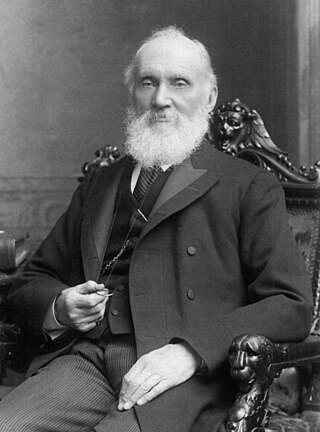
GeForce is a brand of graphics processing units (GPUs) designed by Nvidia and marketed for the performance market. As of the GeForce 40 series, there have been eighteen iterations of the design. The first GeForce products were discrete GPUs designed for add-on graphics boards, intended for the high-margin PC gaming market, and later diversification of the product line covered all tiers of the PC graphics market, ranging from cost-sensitive GPUs integrated on motherboards, to mainstream add-in retail boards. Most recently, GeForce technology has been introduced into Nvidia's line of embedded application processors, designed for electronic handhelds and mobile handsets.

The GeForce FX or "GeForce 5" series is a line of graphics processing units from the manufacturer Nvidia.

The High-Level Shader Language or High-Level Shading Language (HLSL) is a proprietary shading language developed by Microsoft for the Direct3D 9 API to augment the shader assembly language, and went on to become the required shading language for the unified shader model of Direct3D 10 and higher.

The GeForce 4 series refers to the fourth generation of Nvidia's GeForce line of graphics processing units (GPUs). There are two different GeForce4 families, the high-performance Ti family, and the budget MX family. The MX family spawned a mostly identical GeForce4 Go (NV17M) family for the laptop market. All three families were announced in early 2002; members within each family were differentiated by core and memory clock speeds. In late 2002, there was an attempt to form a fourth family, also for the laptop market, the only member of it being the GeForce4 4200 Go (NV28M) which was derived from the Ti line.

The GeForce 6 series is the sixth generation of Nvidia's GeForce line of graphics processing units. Launched on April 14, 2004, the GeForce 6 family introduced PureVideo post-processing for video, SLI technology, and Shader Model 3.0 support.

The GeForce 7 series is the seventh generation of Nvidia's GeForce line of graphics processing units. This was the last series available on AGP cards.

Quadro was Nvidia's brand for graphics cards intended for use in workstations running professional computer-aided design (CAD), computer-generated imagery (CGI), digital content creation (DCC) applications, scientific calculations and machine learning from 2000 to 2020.

Tesla is the codename for a GPU microarchitecture developed by Nvidia, and released in 2006, as the successor to Curie microarchitecture. It was named after the pioneering electrical engineer Nikola Tesla. As Nvidia's first microarchitecture to implement unified shaders, it was used with GeForce 8 series, GeForce 9 series, GeForce 100 series, GeForce 200 series, and GeForce 300 series of GPUs, collectively manufactured in 90 nm, 80 nm, 65 nm, 55 nm, and 40 nm. It was also in the GeForce 405 and in the Quadro FX, Quadro x000, Quadro NVS series, and Nvidia Tesla computing modules.
The GeForce 10 series is a series of graphics processing units developed by Nvidia, initially based on the Pascal microarchitecture announced in March 2014. This design series succeeded the GeForce 900 series, and is succeeded by the GeForce 16 series and GeForce 20 series using the Turing microarchitecture.

Nvidia Tesla is the former name for a line of products developed by Nvidia targeted at stream processing or general-purpose graphics processing units (GPGPU), named after pioneering electrical engineer Nikola Tesla. Its products began using GPUs from the G80 series, and have continued to accompany the release of new chips. They are programmable using the CUDA or OpenCL APIs.

The GeForce 20 series is a family of graphics processing units developed by Nvidia. Serving as the successor to the GeForce 10 series, the line started shipping on September 20, 2018, and after several editions, on July 2, 2019, the GeForce RTX Super line of cards was announced.

Turing is the codename for a graphics processing unit (GPU) microarchitecture developed by Nvidia. It is named after the prominent mathematician and computer scientist Alan Turing. The architecture was first introduced in August 2018 at SIGGRAPH 2018 in the workstation-oriented Quadro RTX cards, and one week later at Gamescom in consumer GeForce 20 series graphics cards. Building on the preliminary work of Volta, its HPC-exclusive predecessor, the Turing architecture introduces the first consumer products capable of real-time ray tracing, a longstanding goal of the computer graphics industry. Key elements include dedicated artificial intelligence processors and dedicated ray tracing processors. Turing leverages DXR, OptiX, and Vulkan for access to ray tracing. In February 2019, Nvidia released the GeForce 16 series GPUs, which utilizes the new Turing design but lacks the RT and Tensor cores.
Ampere is the codename for a graphics processing unit (GPU) microarchitecture developed by Nvidia as the successor to both the Volta and Turing architectures. It was officially announced on May 14, 2020 and is named after French mathematician and physicist André-Marie Ampère.

The GeForce 30 series is a suite of graphics processing units (GPUs) designed and marketed by Nvidia, succeeding the GeForce 20 series. The GeForce 30 series is based on the Ampere architecture, which features Nvidia's second-generation ray tracing (RT) cores and third-generation Tensor Cores. Through Nvidia RTX, hardware-enabled real-time ray tracing is possible on GeForce 30 series cards.

Curie is the codename for a GPU microarchitecture developed by Nvidia, and released in 2004, as the successor to Rankine microarchitecture. It was named with reference to the Polish physicist Marie Salomea Skłodowska–Curie and used with the GeForce 6 and 7 series. Curie was followed by Tesla.

Kelvin is the codename for a GPU microarchitecture developed by Nvidia, and released in 2001, as the successor to Celsius microarchitecture. It was named with reference to William Thomson and used with the GeForce 3 and 4 series.
Celsius is the codename for a GPU microarchitecture developed by Nvidia, and released in 1999, as the successor to Fahrenheit microarchitecture. It was named with reference to Celsius and used with the GeForce 256 and GeForce 2 series.
Fahrenheit is the codename for a GPU microarchitecture developed by Nvidia, and released in 1998, as the successor to STG-2000, Riva 128 microarchitecture. It was named with reference to Fahrenheit and used with STG-2000, Riva 128.
Ada Lovelace, also referred to simply as Lovelace, is a graphics processing unit (GPU) microarchitecture developed by Nvidia as the successor to the Ampere architecture, officially announced on September 20, 2022. It is named after the English mathematician Ada Lovelace, one of the first computer programmers. Nvidia announced the architecture along with the GeForce RTX 40 series consumer GPUs and the RTX 6000 Ada Generation workstation graphics card. The Lovelace architecture is fabricated on TSMC's custom 4N process which offers increased efficiency over the previous Samsung 8 nm and TSMC N7 processes used by Nvidia for its previous-generation Ampere architecture.














